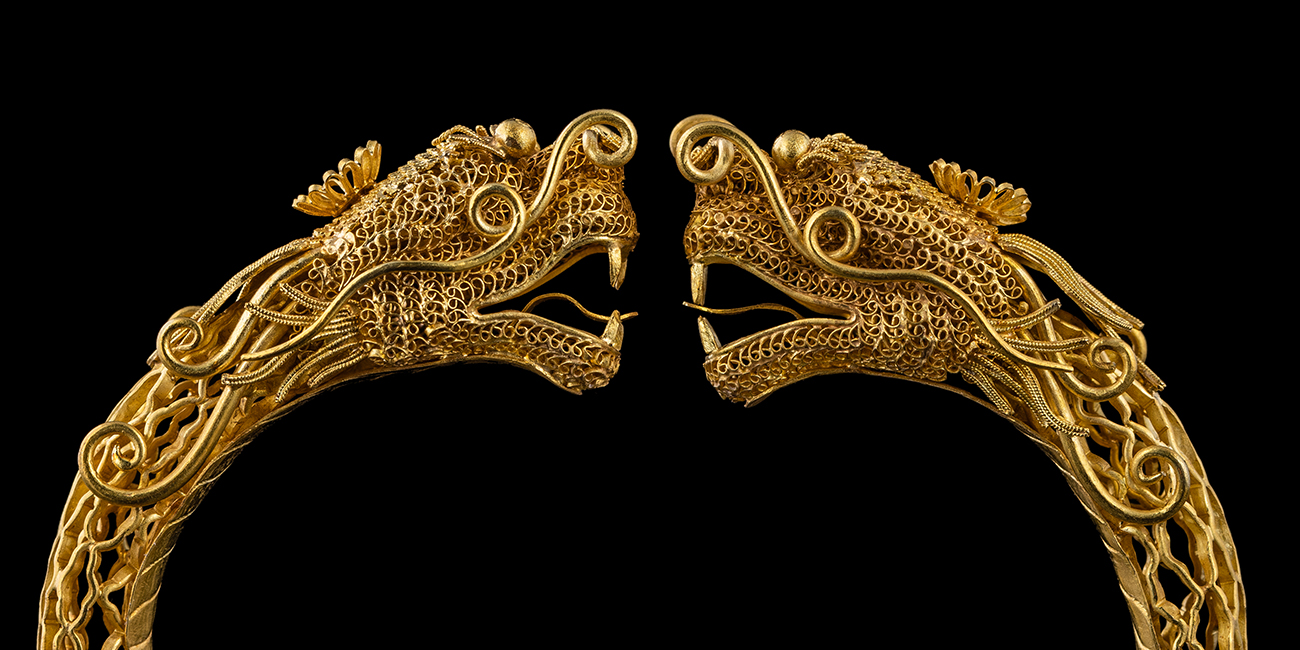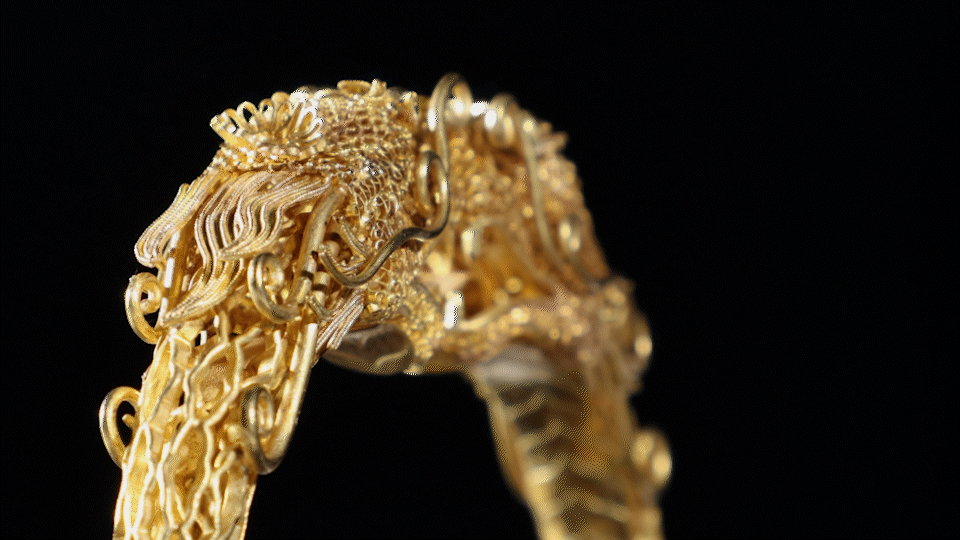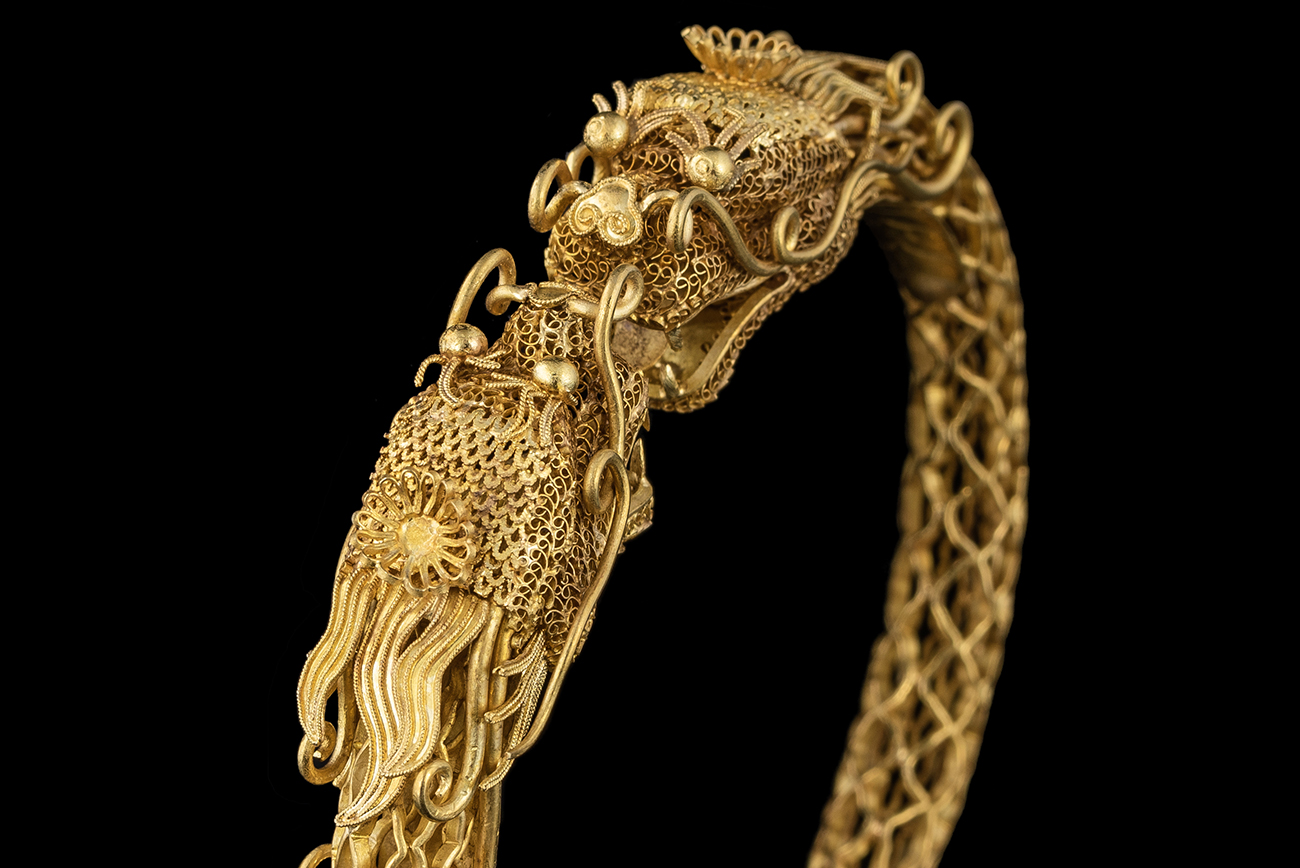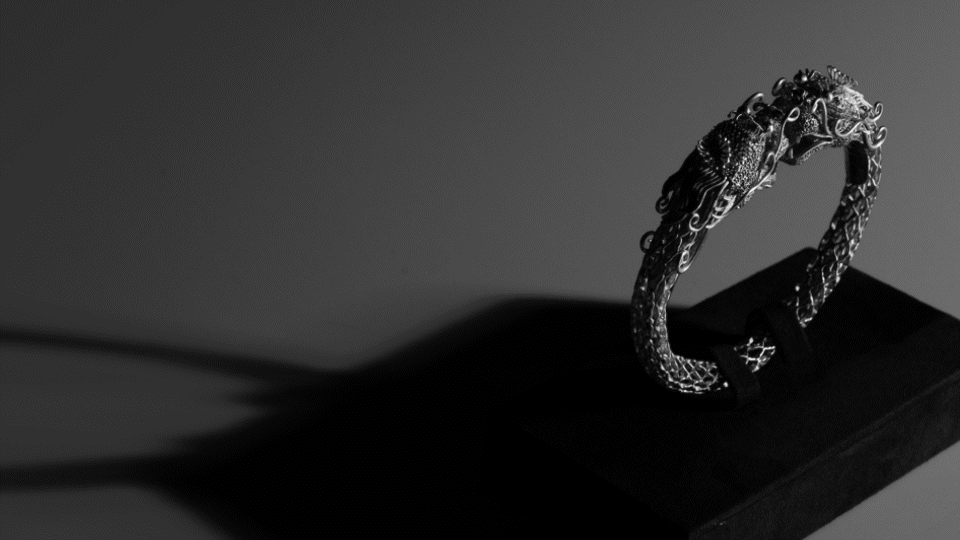



This intricate Double Dragon Bracelet is structured with lightness and fluidity. The sinuous double dragon figure is made with filigree inlay technique, combined with different patterns on the dragon's head and body, shaping into a "6" shape on each side of the dragon's head. There used to be a pearl set on the top of each dragon's head.

"Beside fine wine, like the Moon the maiden fair / Her pair of fine wrists bare as snow." The bearer of this bracelet is most likely a court woman in the Ming or Qing dynasty. The double dragon motif made in gold comes from a long-standing tradition that could be traced back to the Song and Yuan dynasties, with variations in style from period to period. In Ancient Chinese Gold and Silver Jewelry by Yang Zhi-Shui, there is a textual reference to the Ming Dynasty imperial manuscript volume 20, where the passage describes in detail the customs of an imperial wedding. The "wedding gift" section lists four types of wrist ornaments, "a pair of gold lace flower bracelets (20 taels in weight), a pair of plain gold bracelets (20 taels in weight), a pair of gold dragon head bracelets (14 taels in weight), and a pair of gold eight treasure bracelets (8 taels in weight with 14 pieces of external stones)." It is evident that the gold double dragon bracelet with pearls is an important piece of jewelry adopted for the imperial ritual.

In The Dream of the Red Chamber, Xiang Yun, Ping'er and others roasted some venison to eat, where Ping'er removed her bracelets. After the meal, Ping'er realized she had lost a bracelet when she washed her hands. It is later said that this is Wang Xifeng's bracelet, called a "shrimp whisker bracelet". In Deng Yunxiang's Red Chamber Records, he detailed that the shrimp whisker bracelet must have been a double dragon shape with beads set in. "Shrimp whisker" is an expression, to connotate the thinness and durability of craft, used to describe intricate fine objects. Hence, the name "shrimp whisker bracelet."